How Lego City Undercover blows the franchise wide open - and could save the Wii U in the process
Bricks and the city.
Arthur Matthews and Graham Linehan, creators of the classic sitcom Father Ted, were once asked why they'd chosen to make a comedy about priests. Was there, perhaps, some critical commentary on Catholicism at work? No, replied the writers. The jokes were just funnier when performed by priests.
The same could be said of Lego minifigures. There's just something inherently daft and likeable about those yellow-faced fellows that highlights the absurdity of any situation, even if that situation involves driving a fire engine along the pavement, mowing down dozens of pedestrians. In a game like Grand Theft Auto, such a scene would be bleak, bloody and dripping with nihilistic catharsis. In Wii U exclusive Lego City Undercover's breezy free roaming world, it's a slapstick gag. Splattered pedestrians simply spring back to their feet and stagger away. Hero cop Chase McCain even apologises as he speeds on his way, leaving plastic carnage in his wake.
It's one of many delightful details in a game that always finds a way to incorporate the transgressive thrills of more mature rated openworld city games, without ever losing its daft kid-friendly charm. In fact, according to developer TT Fusion, the words grand, theft and auto were never even part of the conversation.
"I don't think we ever really borrowed from that genre," insists Graham Goring, Lego City's scriptwriter. "We never said 'Oh, what have they done in that game? Let's do a family friendly version of that.' It was predicated on things we'd done in Lego games previously, and new ideas that the GamePad gave us. Internally, we could ignore other open world games because, thematically, they are so much darker."
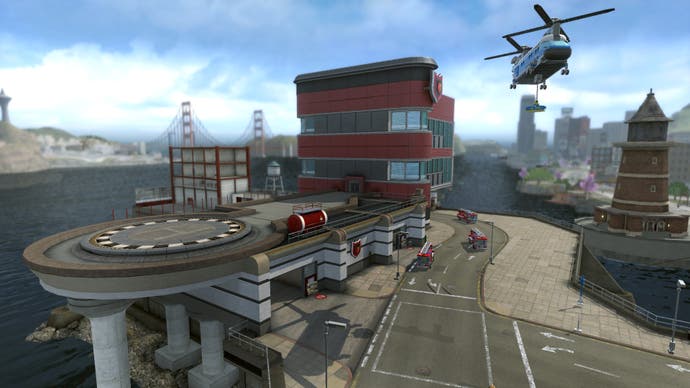
It's understandable that the studio is keen to put distance between its all-ages game and the controversy magnet that is Rockstar's crown jewel, but there's much in the construction of the game that fits the comparison - the car snatching, stunt jumping, trail following structure we all know. The execution says otherwise, however. I've been playing the game for several hours before I even notice that the only weapons in the game are a paint gun and a grapple hook. Even the game's combat is made up of judo throws and defensive martial arts. Considering that previous Lego games had minifigures being blown to bits and wielding guns, it's ironic that the game that most resembles the notorious GTA is by far the least violent title to bear the Lego brand.
"That was one the things we wanted to achieve," says executive producer Loz Doyle of the game's upbeat style. "Nice, bright, always sunny, it feels good to be there. Not like some other open world games where it's a little bit depressing, everyone's horrible to you, you're horrible to them. It's the complete opposite. We definitely approached it from a Lego game point of view. We didn't come at it from any other angle. The comparisons are that it's a city, there are vehicles and there are people. Except it's all Lego and minifigures. It was all about fun."
"That was something that was dictated by the Lego City franchise," adds Lee Barber, lead designer. "It's this lovely utopian world. The crime is cheeky. You're doing naughty things because you're an undercover cop, not because you're a baddie. It's quite moral."
We're sitting around a table at TT Fusion's office in Wilmslow, Cheshire, in a meeting room called The Van Damme Suite. There are Lundgren and Stallone rooms elsewhere, framed movie posters hang wherever there's space and throughout the studio feature walls have been emblazoned with iconic scenes from Blade Runner, The Matrix and Watchmen. These guys love their movies, and that comes across in the cinematic scope of the game they've created.
The Lego series has always had a sharp edge of parody, but freed from specific franchises Lego City Undercover is like a kid in a sweet shop, plucking references and spoofs from across the pop culture spectrum. There's a cutscene that riffs on Goodfellas with pinpoint accuracy, while one level takes The Shawshank Redemption as its starting point. The Lego City police station, meanwhile, counts Lego versions of Starsky and Hutch, Dirty Harry, Columbo and even Sherlock Holmes among its employees.
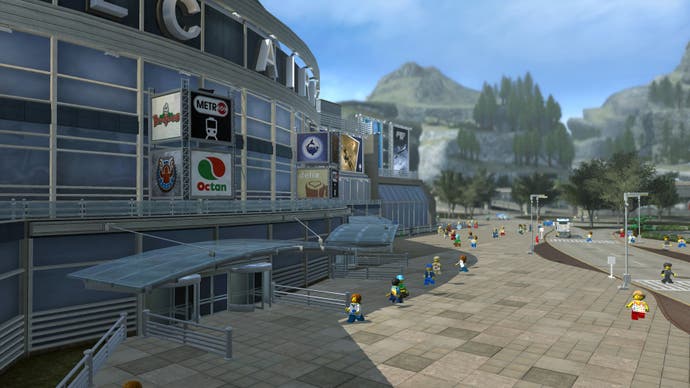
The story follows top cop Chase McCain as he returns to Lego City after an embarassing blunder forced him to leave in disgrace. His nemesis, Rex Fury, has escaped however and now he's been summoned back to put the crime boss back behind bars. Chase is joined by a rich supporting cast of characters, including a prickly police chief, a love interest and a sidekick who moons over the legendary McCain like a puppy.
There are some new gameplay elements, such as collectible bricks left behind when you smash the scenery. These can be saved up to create Super Builds - large structures that perform specific functions in the City. A story mission might need you to build a bridge, for example, or you can use them to erect spawn points for the many vehicles you amass.
How many? Over 100 playable vehicles is the official count, including helicopters, tractors and everything in between. In a nice touch, you can choose the colour of the vehicle before it's delivered, so if you hanker after a bright pink police motorbike, you're in luck. There are also 65 of the aforementioned Super Builds to find, 450 gold bricks and 40 red power-up bricks to earn, and 290 disguises for Chase, granting him new abilities. The city itself matches the game for sheer scale, a shimmering and inviting place, with generous draw distances and silky smooth visuals. It's a gorgeous and massive game.
It's also an incredibly funny game, with Goring's previous career as a stand-up comedian put to good use in a script that finds a gag in every scenario. Not for nothing has the game attracted vocal turns from cult funny men like Adam Buxton and Peter Serafinowicz.
The result is a game that contains all the hallmarks that have made the Lego games so popular, with comfortably familiar mechanics and gameplay systems, but the canvas is much broader and feels subtly different. The Wii U GamePad is used shrewdly, doubling as map screen, communicator and detective gadget as the situation demands. In one of the most impressive features, you can hold it up and scan a real time wireframe version of the city, not just on the screen but for a full 360 degrees around you.
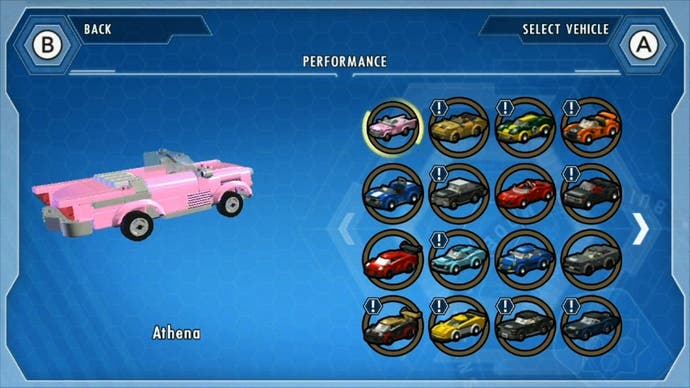
The TT Fusion studio has traditionally tackled handheld versions of the Lego games, along with spin-offs such as Lego Rock Band, while TT's Knutsford headquarters, eight miles up the road, leads with the main console series. There's definitely a sense that Lego City is the result of the smaller studio finally stepping up to the plate and proving its worth alongside a more successful sibling.
"I think it's fair to say that a lot of the guys here are very keen to work on consoles," admits Doyle. "At the same time, we do share the technology, so the engine was done in Knutsford. The cutscene team is shared. There's quite a lot of crossover really. It feels like a team effort."
Indeed, unlike the rapid fire turnaround required by the other, more time sensitive, Lego titles over at TT's other studio, Undercover has enjoyed a slow and steady three-year development period. "We have a really close relationship with Lego," Doyle explains. "So, yeah, we were always talking about it and they'd say 'Are you going to make a Lego City game?' and we'd say it's not quite the right time, or we're not sure what the game is. We'd always been quite open with them that we still weren't sure what that game was. They were obviously keen for us to do it. It's their biggest brand."
Work began in 2010, and various prototypes were tried and rejected. The traditional fixed camera from the other Lego games was quickly abandoned. At one point there was going to be a Sim City style construction element. By 2011, the game was taking its current shape. "That's when Nintendo came to see us," Doyle recalls. "They brought the Wii U with them, with the new GamePad. We could instantly see it was a perfect match. All the design guys were like 'Oh my god, the things we can do with this'. It just seemed to fit perfectly."

Even so, the ambitions for the game far outstripped anything either of the TT studios had worked on before, with the open world structure requiring considerable reinvention. "The streaming," says Doyle of the game's biggest technical challenge. "Creating a city, obviously you have to stream. You're constantly hitting the disc. The amount of stuff we had to have in memory, that was difficult. We had to rewrite the way all the Lego bits were processed because we have a lot more Lego than we're used to in any one area. God, there were loads of things that needed to be done. New physics engine. Not just new vehicles but the whole traffic system, which is really difficult for a city. Pedestrians. So many things had to be written from scratch. All the voice acting. It was hard."
Of course, even as Lego City was in development, its headline features of full voice acting and open world exploration were finding their way into Lego Batman 2 and Lego Lord of the Rings, albeit in less fully realised forms, but Doyle shrugs off the suggestion that those titles may have stolen a little of his game's thunder. "We were in development and they were part of that development," he says of the main TT studio. "They'd be foolish not to use the good stuff from City. They have very different feels. Batman is at night, it's raining usually, and the city wasn't vibrant or interesting like ours is. There's no traffic. I don't think we felt bad about it at all."
Having an established partner team using and adapting the same code may even have proved beneficial and brought the two studios closer together, according to lead designer Barber. "As we were doing City they'd go off on their path, and then come back," he explains. "We'd find that once they'd run with it for nine months, they'd pushed the code so much further, so when we carried on using it, it had progressed even more. I think if we were on our own, I don't think it would have gone anywhere near as far. Those guys over there are absolute whiz kids when it comes to this kind of stuff. I think in the beginning it was, like, we've got an opportunity to show what we can do over here. We have got 160 people here. But now Travellers Tales is just one big unit. It's all mixed up. It's just one big studio in two offices."
It's certainly a great showcase for the beleaguered Wii U, which has lost one of its key exclusives in recent weeks. The controversial delay of Rayman Legends, and its escape to multi-format waters, now makes Lego City Undercover the console's big mass market hope for a spring sales boost.
"It's great," says Doyle, utterly unphased by the prospect of providing Nintendo's first blockbuster release of the year. "We're obviously really pleased with the game. If it wasn't very good then we'd probably feel under pressure, but it's our best Lego game and that's really saying something. We're really chuffed. It's the best game on the Wii U." There's not much competition for that accolade at the moment, but don't be surprised if that boast still rings true in five years time.
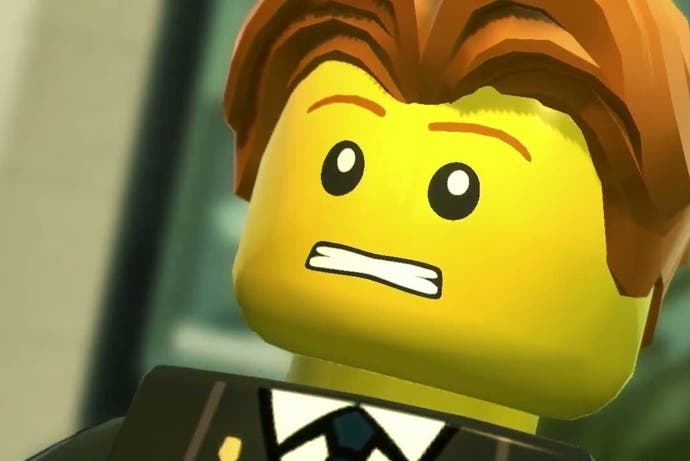


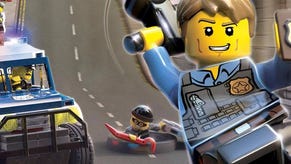







.png?width=291&height=164&fit=crop&quality=80&format=jpg&auto=webp)



